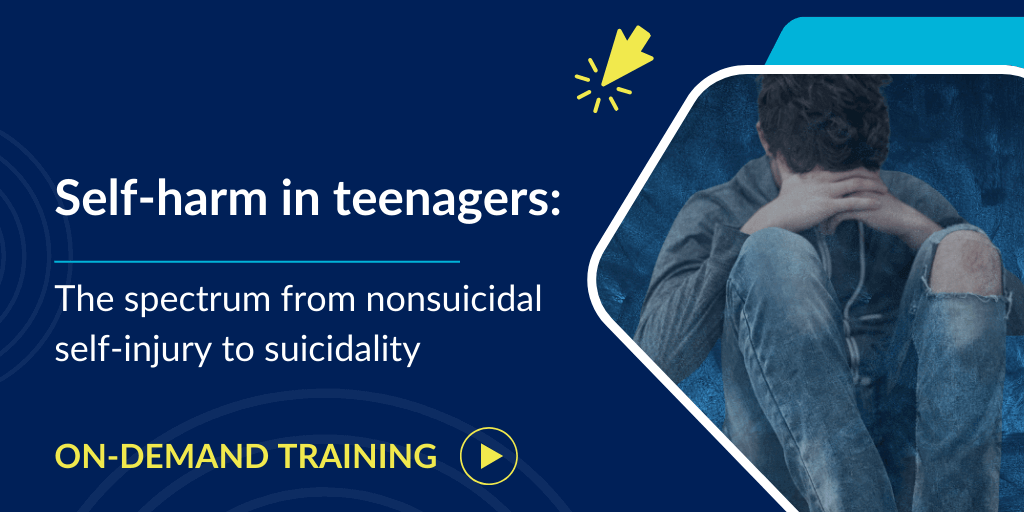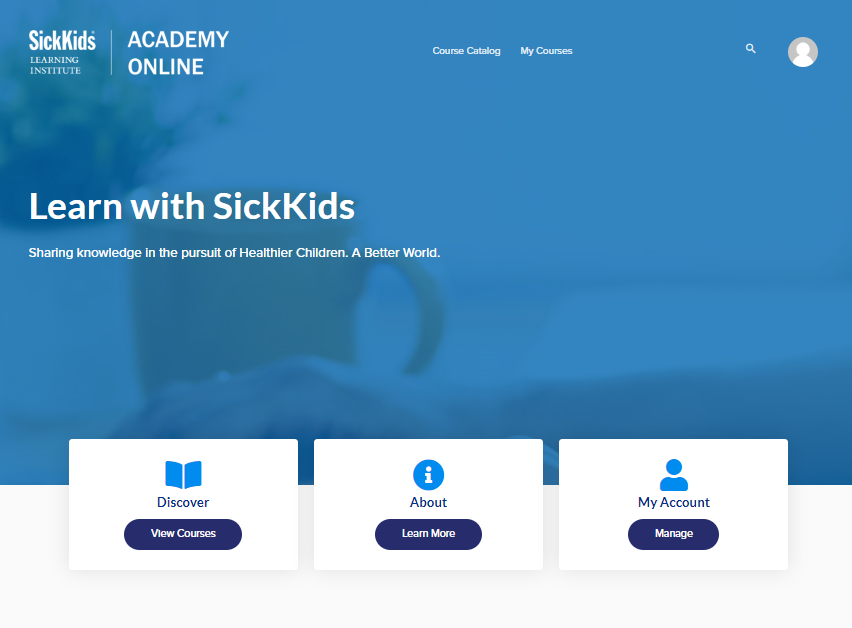Self-harm in teenagers: The spectrum from nonsuicidal self-injury to suicidality

This on-demand training is a recording of our hybrid training that took place on July 7, 2023. There are two recordings available:
1) Non-suicidal self-harm in teenagers: The role of emotion regulation in understanding and treating this urgent problem
2) Suicide in teenagers: Signs, symptoms and risk factors
Participants have the option to register for one session or both. Upon registration, participants will receive a confirmation email that includes access information to our on-demand training platform, SickKids Academy Online. Participants will have access for 90 days from the date they begin the course on SickKids Academy Online. Following the training, participants are required to complete a quiz to receive the Certificate of Participation.
Self-harm in teenagers: The spectrum from nonsuicidal self-injury to suicidality on-demand training features Dr. Marshall Korenblum, an expert speaker and psychiatrist at Garry Hurvitz Centre for Community Mental Health at SickKids.
As cited by *research from The Hospital for Sick Children, there has been a sharp increase in emergency department visits for attempted suicide and suicide ideation among children and adolescents during COVID-19. While there was a 32 per cent reduction in pediatric ED visits for any health-related reasons during the pandemic, there was an alarming 22 per cent increase in the number of children and adolescents going to EDs for suicide attempts and an eight per cent increase in visits for suicide ideation.

Non-suicidal, self-harm in teenagers: The role of emotion regulation and treating this urgent problem
CE: 3 hours
Overview:
Cutting. Burning. Extreme risk-taking. There has been an explosion of self-harm among teenagers in the last 10 years. Why? What could possibly drive young people, in the prime of their lives, to hurt themselves in such dramatic and widespread ways?
This training will define a DSM-V syndrome called Nonsuicidal Self-Injury Disorder. Dr. Korenblum will describe the epidemiology and prevalence of self-harm, and explain its underlying root causes. He will outline the central roles of social media, emotion dysregulation, and insecure attachment in self-harm behaviors. NSSI has a complex and nuanced relationship to actual suicide attempts, along with borderline personality disorder and these relationships will be clarified. The training will explain the evidence for various treatment approaches, empowering clinicians to make rational decisions when encountering distressing problems.
Learning objectives:
- Define the criteria for Nonsuicidal Self-Injury Disorder and describe its prevalence/epidemiology
- Understand the reasons why teenagers hurt themselves
- Describe the role and function of NSSI
- Clarify the relationship between NSSI and suicidal behaviour; between NSSI and BPD

Suicide in teenagers: Signs, symptoms and risk factors
CE: 3 hours
Overview:
The prevalence rate of suicide in teenagers remains unacceptably high.
Why? We need to ask What….
- are the warning signs and risk factors for suicidal behaviour in teens?
- can be done to intervene?
- role does mental illness play?
- role does media (social media, television, movies, and etc.) play?
This training will elucidate a clear understanding of how to recognize the signs of suicide in teenagers and what to do about it.
Learning objectives:
- Define the differences between “normal” sadness and clinical depression
- Identify risk factors and red flags for suicidal behaviour in teenagers
- Describe options for managing suicidal behaviours
- Explore protective factors and components of resilience in teenagers

Updated January 5, 2026



